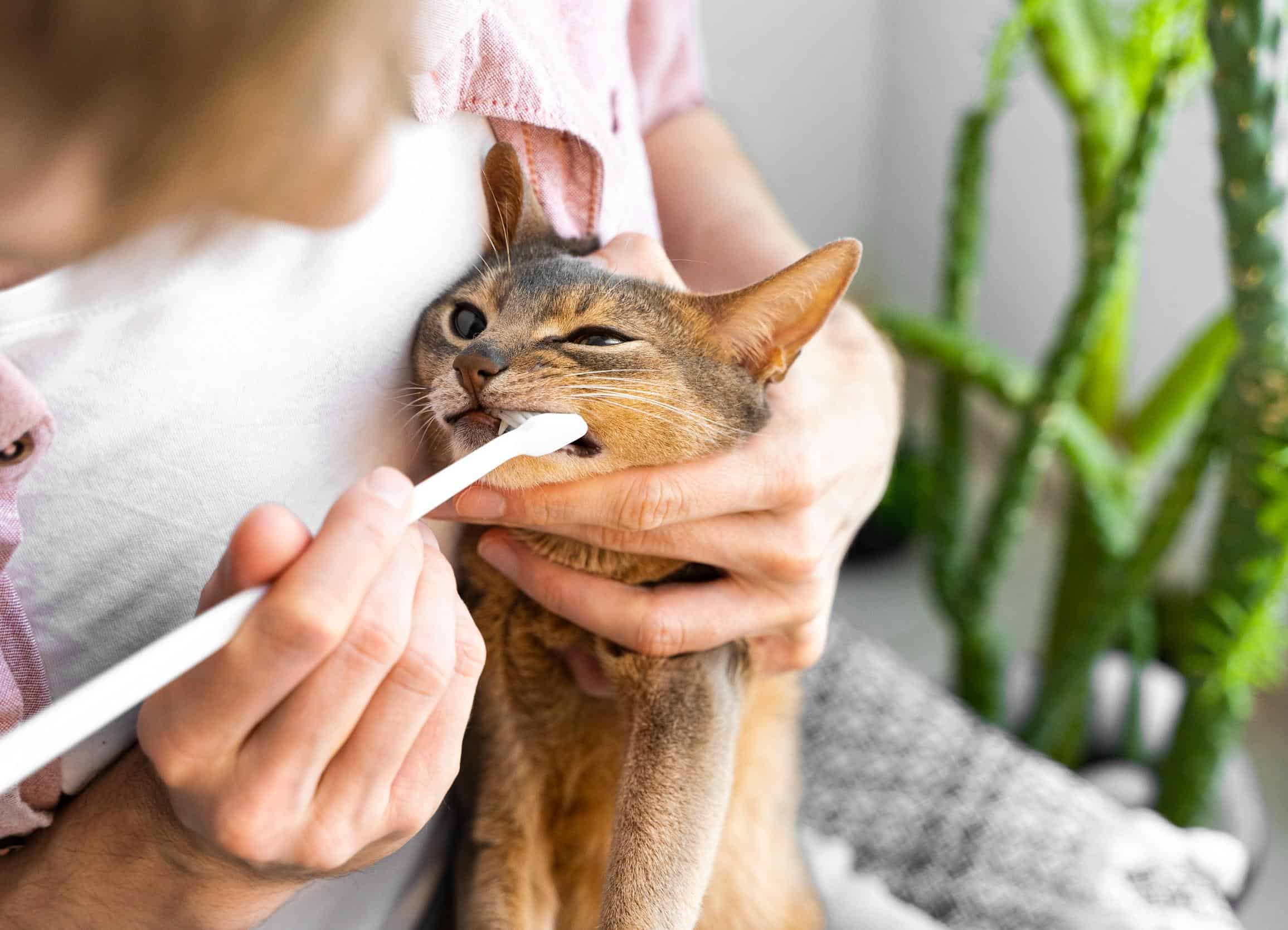Cat Dental Woes: Identifying and Treating Common Feline Oral Issues

Did you know that many health issues cats face can begin with oral problems? Cat dental diseases are common and can have severe consequences if left unaddressed.
At Rocklin Ranch Veterinary Hospital, we understand the importance of feline dental care. Caring for your cat’s smile is part of what we do best—offering comprehensive dental care services to keep your furry friend happy and healthy.
Common Cat Dental Diseases
Cats are adept at hiding discomfort, so dental problems often go unnoticed until they become severe. To help you understand what could be affecting your feline’s oral health, here’s a rundown of the most common issues:
- Feline gingivitis
- Periodontal disease
- Cat tooth decay
- Feline oral resorptive lesions
- Fractured teeth
Through regular dental exams, we ensure your cat’s pearly whites stay healthy, preventing future discomfort and more severe complications.
Detecting the Signs of Feline Gingivitis
Gingivitis is the inflammation of the gums and is often the first stage of a dental disease that can progress to more serious conditions. Symptoms include red, swollen gums, and bad breath. Left untreated, it can lead to periodontal disease.
Tackling Periodontal Disease in Cats
Periodontal disease is one of the most common dental issues in cats, and it often goes unnoticed until it’s advanced. If left untreated, this disease can cause severe pain, tooth loss, and can even affect a cat’s systemic health, potentially damaging organs such as the heart and kidneys.
Understanding Cat Tooth Decay
Decay in feline teeth can result from a variety of factors, including diet, oral hygiene, and age. It typically presents as lesions or cavities that can cause discomfort or lead to more severe dental disease. This type of decay can lead to significant health issues if left unchecked.
Feline Oral Resorptive Lesions
Feline oral resorptive lesions (FORLs) are a common dental problem in cats, especially those over six years old. These lesions can quietly damage a cat’s teeth, potentially leading to tooth loss if not treated. They are second only to gum disease in how often they affect cats.
The exact cause of FORLs is unknown, but they start when specific cells that usually repair and remodel a tooth’s structure begin to break it down instead. These lesions are hard to spot with the naked eye because they often develop under the gumline. Dental X-rays are necessary to find these lesions and check if they have reached the tooth’s root.
Our approach to treating FORLs includes:
- Prophylaxis and Fluoride Therapy: For the mildest cases affecting only the enamel, we perform a thorough cleaning and polish, complemented by fluoride therapy to fortify the teeth against future assaults.
- Restoration: Should the lesion affect the dentin but not the root canal, we can intervene with restorative treatments, effectively ‘filling in’ the damaged area to restore the tooth’s integrity.
- Extraction: If the lesion is severe and affects the tooth’s core, removing the tooth might be the best option to stop pain and avoid more serious dental problems.
With regular check-ups, we can intercept these lesions before they become a source of pain for your pet or cause more severe issues.
Addressing Fractured Teeth in Cats
Fractured teeth are a common yet often overlooked problem in cats and can range from minor chips to severe breaks that expose the inner, sensitive parts of the tooth. Causes include trauma, such as falls or impacts, and behavioral factors. A fractured tooth can be painful for your cat, and might lead to further dental complications, including infections and tooth loss.
A Whisker Away From Relief: Treating Dental Issues
When dental woes strike, we have a range of treatments to help your feline feel better. From professional cleanings to root canals, our goal is to preserve your cat’s teeth whenever possible. We also provide guidance on home care, including tooth brushing, to keep those pearly whites in tip-top shape.
Understanding the full extent of dental issues often requires a look below the gumline. Digital dental X-rays are a critical tool we use to diagnose conditions that are not visible during a standard oral exam. These high-definition images allow us to assess the health of the tooth roots and bones, ensuring no problem goes undetected.
Our Commitment to Your Cat’s Comfort
We understand that dental procedures can be stressful for your pet, which is why we use general anesthesia to ensure a pain-free and anxiety-free experience. Our skilled veterinary technicians monitor your cat’s vitals throughout the procedure, providing the same care we would want for our pets.
The veterinarians and staff at Rocklin Ranch Veterinary Hospital are committed to providing your feline friend the highest standard of dental care. Contact us today to learn more or to schedule your pet’s next dental appointment.

